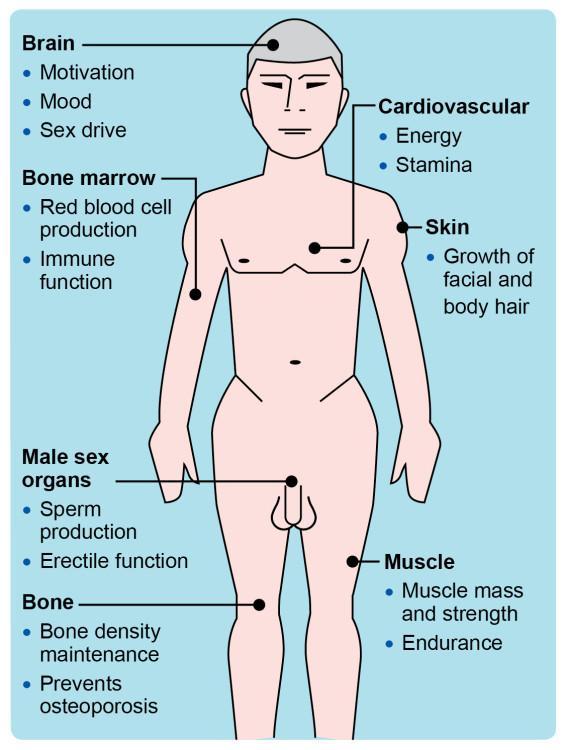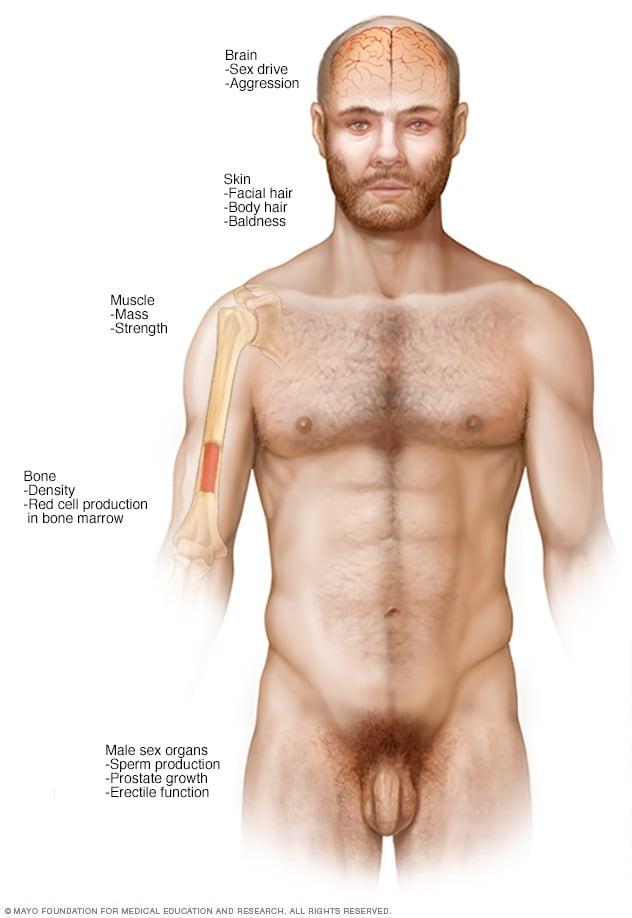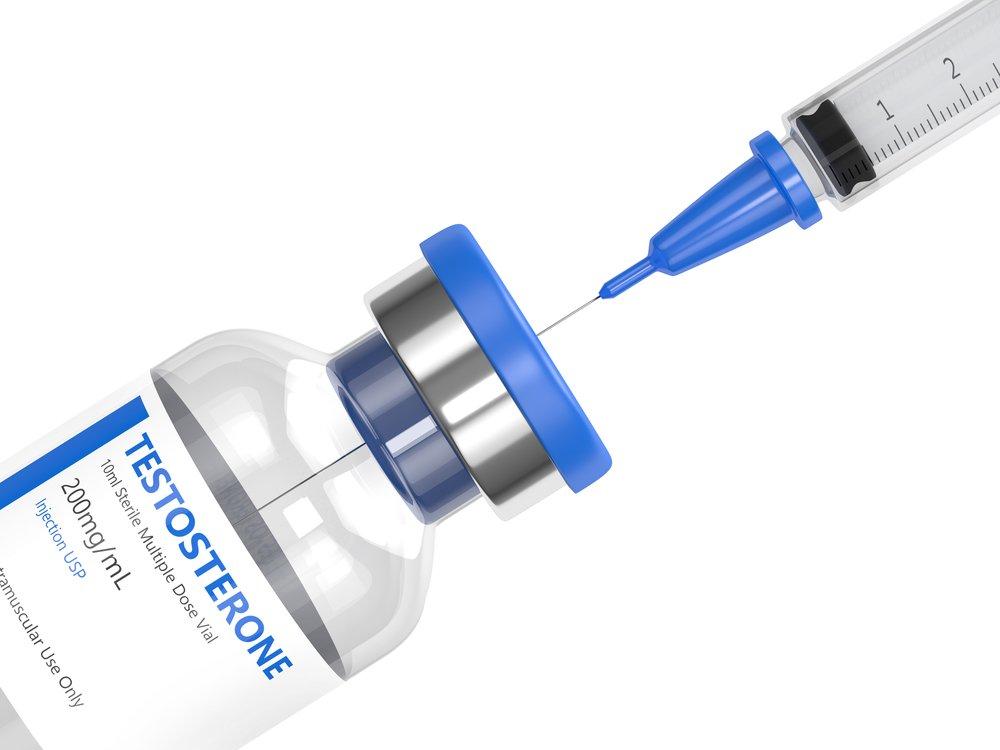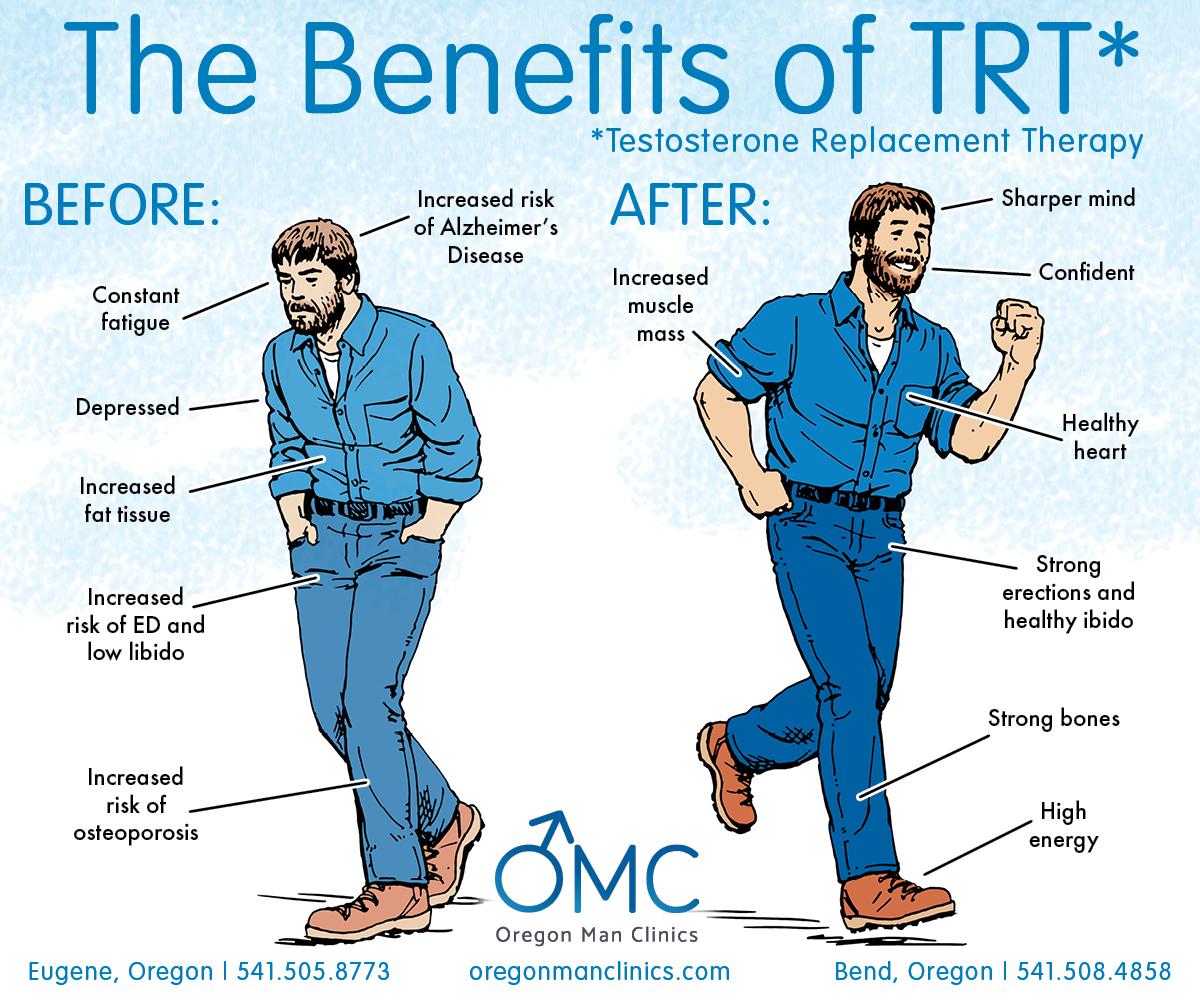In the realm of hormone replacement therapy, testosterone stands out as a pivotal player, particularly for those facing the challenges of low hormone levels. As men and women alike seek to reclaim their vitality and improve their overall well-being, the options for testosterone therapy have expanded, leading to an ongoing discussion about the most effective methods of administration. This article delves into the two most popular forms of testosterone therapy—gels and injections—unpacking their distinct advantages and disadvantages. By shedding light on the science behind each method and considering factors such as convenience, absorption rates, and patient preferences, we aim to guide readers toward an informed choice that aligns with their health goals. Whether you’re contemplating your own testosterone therapy journey or simply curious about the options available, join us as we explore the nuances of gels versus injections in the quest for hormonal balance.
Understanding Testosterone Therapy: An Overview of Gel and Injection Options
When choosing between testosterone therapy options, understanding the differences between gel and injections is crucial for making an informed decision. Gels offer a convenient, non-invasive method of administration that can be applied directly to the skin, typically on the shoulders or upper arms. This option allows for a gradual absorption of testosterone, leading to stable hormone levels without the need for needles. However, users must be cautious about skin-to-skin contact with others after application to prevent unintentional transfer of the hormone, which is especially important in households with children or women of childbearing age. The daily application routine can also be a drawback for some individuals who prefer a less frequent regimen.
On the other hand, testosterone injections present a different approach, which can be administered either intramuscularly or subcutaneously. This method often involves fewer routine applications, with many patients typically receiving injections every one to three weeks, which can be more convenient for those who dislike daily tasks. However, injections can cause discomfort at the site, and there is a possibility of fluctuating hormone levels between doses, leading to potential mood swings or energy fluctuations. Below is a quick comparison of the two options:
| Feature | Testosterone Gel | Testosterone Injection |
|---|---|---|
| Administration | Topical | Intramuscular/Subcutaneous |
| Frequency | Daily | Every 1-3 weeks |
| Pain Level | Low | Moderate (injection site discomfort) |
| Hormonal Stability | More stable | Fluctuates |
| Risk of Transfer | Yes | No |

Mechanisms of Action: How Gels and Injections Deliver Testosterone
Mechanisms of administering testosterone therapy can influence the overall effectiveness and convenience of the treatment. Gels function by utilizing transdermal absorption, in which the hormone seeps through the skin into the bloodstream. This method offers a steady release of testosterone, promoting more stable hormone levels throughout the day. Typically, patients apply a thin layer of gel to clean, dry skin on areas such as the shoulders or abdomen, allowing the testosterone to penetrate effectively. The benefits of this method include:
- Ease of application: Simple to use with no need for needles.
- Gradual absorption: Reduces the risk of spikes and dips in hormone levels.
- Convenient dosing: Allows for daily adjustments based on personal requirements.
In contrast, injections deliver testosterone directly into the muscle, leading to a faster and often more potent increase in hormone levels. This method can be administered either intramuscularly or subcutaneously, with intramuscular injections typically providing a higher initial concentration. The frequency of injections can vary, with some requiring administration every few weeks. Key characteristics of this delivery method include:
- Rapid absorption: Provides immediate elevation of testosterone levels.
- Longer-lasting effects: Depending on the formulation, some injections can last for several weeks.
- Customized dosing: Doses can be adjusted based on individual therapeutic needs.
| Characteristic | Gels | Injections |
|---|---|---|
| Administration Method | Transdermal | Intramuscular/Subcutaneous |
| Frequency | Daily | Weekly/Biweekly |
| Onset of Action | Gradual | Rapid |
| Stability of Levels | Steady | Peaks and troughs |

Efficacy Comparison: Which Method Produces Better Results?
The efficacy of testosterone therapy is often evaluated through two primary methods: gels and injections. While both approaches aim to alleviate symptoms related to low testosterone levels, their effectiveness can vary based on individual circumstances. Among the essential aspects to consider are the delivery mechanism, absorption rates, and patient adherence. Testosterone gels allow for daily application, promoting a steady release of hormones into the bloodstream, which can lead to stable testosterone levels. Conversely, injections typically require less frequent administration, often ranging from weekly to monthly, resulting in higher peaks and troughs in hormone levels that some patients may find less desirable.
When assessing the long-term outcomes of these therapies, many studies suggest that while both methods can increase testosterone levels effectively, there may be differences in how patients respond. Factors such as personal lifestyle, convenience, and side effects can significantly impact patient satisfaction and results. Below is a brief comparison that highlights key differences between the two methods:
| Factor | Gels | Injections |
|---|---|---|
| Administration Frequency | Daily | Weekly/Monthly |
| Absorption Rate | Steady | Variable (Peaks and Troughs) |
| Side Effects | Skin irritation, Transfer risk | Injection site pain, Mood swings |
| Patient Adherence | Flexible but daily commitment | Less frequent but requires scheduling |

Safety Profile: Evaluating Risks and Side Effects of Gels Versus Injections
When considering testosterone therapy, it is crucial to assess the safety and potential risks associated with gels and injections. Both methods deliver testosterone effectively, yet they carry distinct side effects that may influence a patient’s choice. Common side effects of testosterone gels may include skin irritation, acne, and increased body hair growth. Because gels are applied topically, there is also a risk of transference to others, particularly if skin contact occurs before the gel has dried completely.
In contrast, injections tend to have a different risk profile, with side effects often encompassing injection site pain, mood fluctuations, and more severe risks such as cardiovascular events and changes in cholesterol levels. While injections can yield a more stable serum testosterone level, patients may encounter the discomfort of needles and the need for scheduled visits. The table below summarizes the potential side effects for an easy comparison:
| Administration Method | Common Side Effects |
|---|---|
| Gels | Skin irritation, acne, increased body hair, transference risk |
| Injections | Injection site pain, mood swings, cardiovascular risks |
Convenience and Lifestyle Impact: Choosing the Right Administration Method
When considering testosterone therapy, the convenience of the administration method plays a critical role in how well the treatment fits into one’s lifestyle. Gels offer a simple, hassle-free alternative; they can be applied directly to the skin once daily, allowing for a quick and discreet routine. This form of administration also eliminates the need for needles, making it less intimidating for those wary of injections. Injections, while often requiring more time and effort, may appeal to individuals who prefer a more controlled dosage cycle, typically administered once every one to two weeks. However, the need to visit a healthcare provider for administration can be a drawback for those with a busy schedule or limited access to medical facilities.
Moreover, each method comes with its own set of lifestyle impacts that can influence daily activities and personal preferences. For instance, when using gel treatments, users should be mindful of contact with others immediately after application, as it could transfer testosterone. On the other hand, injection therapy may involve post-injection discomfort or the necessity of scheduling time off for medical appointments. This can complicate daily routines, particularly for those with demanding jobs or family commitments. Ultimately, understanding the nuances of each method can empower individuals to choose what best aligns with their personal lifestyle, preferences, and health goals.
Cost Analysis: Financial Considerations for Gel and Injection Therapies
The financial implications of choosing between testosterone gel and injection therapies can be quite significant. Both treatment options come with their own set of costs, which can vary depending on factors like dosage, frequency of administration, and individual insurance coverage. When considering testosterone gel, patients often find it to be a more accessible option, as it typically requires less frequent physician visits and can be applied at home. However, the price of gel can accumulate over time, especially as it often needs to be used daily. Here’s a simple overview of potential cost factors associated with testosterone gel and injections:
- Gel:
- Monthly prescription costs
- Potential for higher out-of-pocket expenses if insurance coverage is limited
- Minimal additional costs for application supplies
- Injections:
- Cost of syringes and needles
- Regular doctor visits for administration, possibly increasing total expenditure
- Lower monthly drug costs depending on dosage frequency
To provide a clearer understanding of the costs associated with each therapy, below is a comparison table illustrating average monthly expenses for both gel and injection therapies. This can serve as a quick reference for patients and healthcare providers alike, facilitating informed decision-making based on personal financial situations:
| Treatment Type | Average Monthly Cost | Administration Frequency |
|---|---|---|
| Testosterone Gel | $300 – $650 | Daily |
| Testosterone Injections | $150 – $400 | Every 1-2 weeks |
Personalizing Treatment: Factors to Consider When Choosing Between Gel and Injections
Choosing between testosterone therapy gel and injections involves evaluating several important factors that can significantly influence treatment outcomes and personal comfort. Frequency of application is key; while gels may require daily use, injections could be administered weekly or bi-monthly, affecting patient convenience and adherence. Moreover, consider absorption variability; gels can be impacted by skin condition and daily activities, such as showering, which may limit effectiveness. On the other hand, injections provide more predictable serum testosterone levels, which can be essential for those seeking stable hormone balance.
Another crucial factor is side effects and personal preferences. Some individuals may experience skin irritation or sensitivity with gel applications, while needle-related discomfort might deter others from opting for injections. Lifestyle compatibility is also significant—gels can be less discreet, and the need to avoid contact with others post-application can complicate daily life. The cost factor should not be overlooked, as insurance coverage for gels versus injections can vary. Ultimately, a collaborative dialogue with a healthcare provider is vital to tailor the most effective therapy aligned with individual needs and lifestyles.
Q&A
Q&A: Testosterone Therapy Gel vs. Injections
Q: What are the primary methods of testosterone therapy available today?
A: The two most common methods of testosterone therapy are topical gels and intramuscular injections. Both options are designed to help manage symptoms of low testosterone levels but differ significantly in administration, absorption, and patient experience.
Q: How does testosterone gel work, and how is it applied?
A: Testosterone gel is applied directly to the skin, typically on areas such as the upper arms, shoulders, or abdomen. It’s absorbed through the skin and enters the bloodstream gradually. This method offers a convenient, self-administered approach, usually requiring daily application.
Q: What about testosterone injections? How are they administered?
A: Testosterone injections are typically administered intramuscularly, meaning they are injected directly into a muscle, often in the thigh or gluteal area. The frequency of injections can vary from every week to every month, depending on the formulation used and physician recommendations.
Q: What are the key differences in terms of convenience and lifestyle?
A: Testosterone gel offers greater convenience for many patients since it can be applied at home without the need for needles. However, individuals must remember to apply it daily and allow time for it to dry before dressing. Injections require scheduling and may involve visits to a healthcare provider, but for some, they may offer a more straightforward regimen by not needing daily application.
Q: Are there differences in how the body absorbs testosterone from gel compared to injections?
A: Yes, absorption rates differ. Testosterone gel allows for a more stable release of hormones over time, potentially leading to more consistent testosterone levels. In contrast, injections often result in a spike in levels shortly after administration, followed by a gradual decline, which may require careful timing and monitoring to avoid fluctuations.
Q: What are the side effects associated with each method?
A: Common side effects for both methods can include acne, mood changes, and increased body hair. With gel, there’s a potential risk of transferring testosterone to others through skin contact. Injections may lead to injection site reactions, such as soreness or swelling, and carry a risk of more systemic side effects due to hormonal peaks.
Q: Which method is better for me?
A: The choice between testosterone gel and injections largely depends on individual preferences, lifestyle, and medical considerations. Consulting with a healthcare provider is crucial to determine which method best fits your health needs and personal circumstances. Factors like convenience, comfort with needles, and how the body responds to treatment all play a role in this decision.
Q: Is there a cost difference between the two options?
A: Cost can vary based on insurance coverage, the specific products used, and geographical location. Generally, testosterone gels might be more expensive than injections on a monthly basis, especially if insurance does not cover them. However, financial considerations should not override a personalized treatment approach; always discuss options with a healthcare provider.
Q: Can I switch from one method to another?
A: Yes, transitioning between testosterone gel and injections is possible, but it should always be done under medical supervision. Your healthcare provider can guide you through the process to minimize any potential side effects and ensure your testosterone levels remain stable throughout the transition.
Q: How often should I be monitored while on testosterone therapy?
A: Regular follow-ups with your healthcare provider are important for both gel and injection users. Monitoring testosterone levels, liver function, and overall health can help ensure that the chosen therapy remains effective while minimizing potential risks. Typically, evaluations are conducted every few months when therapy is initiated, and then annually once stable.
Whether you lean towards the convenience of a gel or the precision of injections, both testosterone therapies hold promise for those seeking relief from the effects of low testosterone. Ultimately, it’s about finding what aligns best with your lifestyle and health goals.
To Wrap It Up
In the quest for optimal health and well-being, the decision between testosterone therapy gel and injections ultimately comes down to personal preference, lifestyle considerations, and individual medical needs. Each method has its own set of benefits and potential drawbacks, making it essential for patients to have open conversations with their healthcare providers. Whether you lean towards the convenience of a gel that seamlessly integrates into your daily routine or the focused potency of an injection, understanding the nuances of both options can empower you to make an informed choice. As we continue to uncover the complexities of hormone therapy, one thing remains clear: your journey towards balance is uniquely yours. Embrace it with knowledge, and let your body guide the way.










